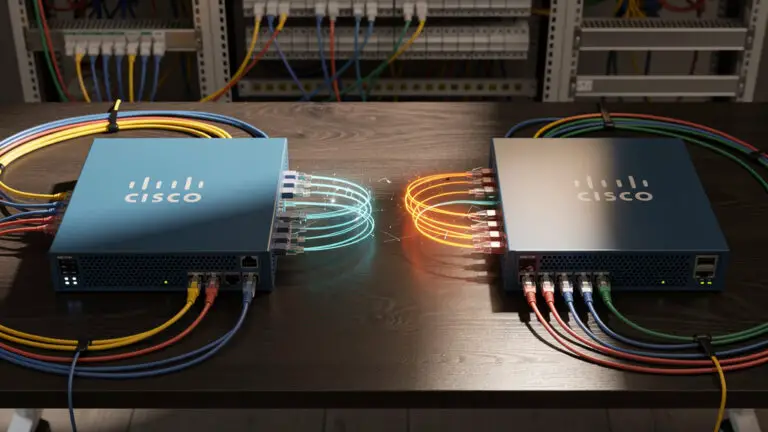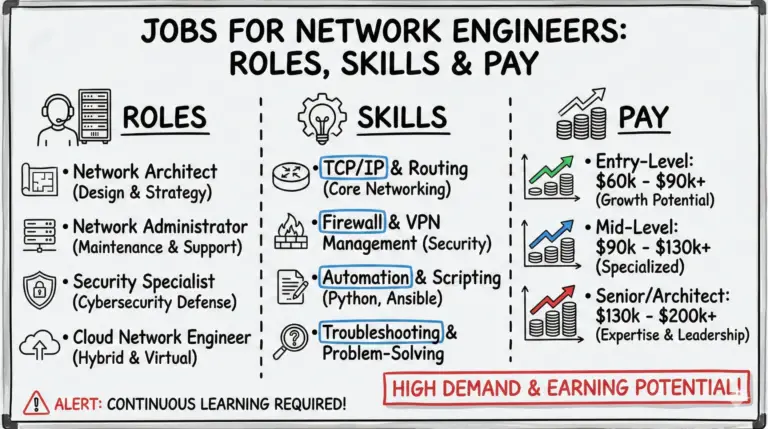Facing the frustrating issue where your WiFi Not Working on iPhone But Working on Other Devices? Don’t worry, you’re not alone. This common problem can stem from various causes, such as software glitches, incorrect settings, or hardware issues with your iPhone. In the following sections, we’ll dive into simple yet effective fixes, including resetting network settings, updating your iOS, and checking for physical obstructions.
Stick around to turn your WiFi woes into a thing of the past with our easy-to-follow solutions.
Key Takeaways
- 📱 WiFi connectivity issues on iPhones can be due to various causes including software glitches, incorrect settings, or hardware problems.
- 🔄 Restarting your iPhone and home router can often resolve connectivity issues by resetting network services and clearing corrupt cache.
- ✈️ Toggling Airplane Mode on and off can quickly reset all wireless connections, potentially fixing the issue.
- 📊 Checking cellular data limits is important, as exhausted data can disable connectivity until the next billing cycle.
- ⚙️ Resetting network settings can help resolve connectivity problems by reverting all custom Wi-Fi, VPN, Bluetooth, and cellular settings to default.
- 📡 Updating iOS software can fix software-related bugs and optimize connectivity protocols, potentially resolving Wi-Fi issues.
- 🔄 Trying to connect to a different Wi-Fi network can help determine if the issue is isolated to a specific network.
- 📶 Changing the router’s frequency band to 5Ghz can eliminate dual-band conflicts and improve connectivity.
- 🏭 Factory resetting the iPhone is a last resort to resolve persistent software issues by erasing all data and settings.
- 🛠️ If DIY troubleshooting doesn’t work, hardware issues with antenna bands or wireless logic board components may require professional service.
What Causes This Issue in the First Place?
Before we dive into the step-by-step fixes, let’s first understand what causes an iPhone to not connect to Wi-Fi when other devices can. Here are some of the most common culprits behind this connectivity problem:
- Weak Wi-Fi Signal – If your iPhone is too far from the wireless router, the signals may be too weak for it to catch. Other devices placed closer can connect just fine.
- Wrong Wi-Fi Password – A minor typo or wrong letter while entering the Wi-Fi password can also lead to failed connections on that device.
- Disabled Wi-Fi – Accidentally turning off Wi-Fi or toggling Airplane mode can cut-off the connection.
- Exhausted Data Limits – Using up your monthly data allowance would stop any cellular or Wi-Fi connections.
- Parental Controls – Usage restrictions enabled to block certain sites and apps can prevent Wi-Fi access as well.
- Bulky Phone Case – Thick or metallic phone cases can sometimes physically block wireless signals.
Now that we know what usually causes an iPhone to not connect over Wi-Fi when all other devices work perfectly, let’s look at some proven ways to troubleshoot and fix this problem.
Check out Wifi Connected But No Internet: Causes, Fix, and Preventive Measures for other WiFi related issues plaguing your other devices and how to effectively troubleshoot them.
Step-by-Step Troubleshooting Guide: Resolve iPhone Not Connecting to Wi-Fi
First and foremost, before even you start troubleshooting. Ensure the home WiFi router is on and working, within range with your iPhone, and your iPhone’s Wi-Fi is enabled.
Follow these 8 troubleshooting steps carefully and methodically to get your iPhone connecting over your home or office Wi-Fi again:
1. Restart the iPhone and Home Router
The first go-to fix is simply restarting your iPhone. A quick reboot helps reset all network services and clears out any corrupt cache/connections preventing Wi-Fi access.
- For iPhone 8 or earlier – Hold down the Power button till you see the “Slide to Power Off” bar. Slide it and wait 30 seconds as it switches off. Now press the Power button again to restart your phone.
- For iPhone X or later – Press and release Volume Up followed by Volume Down and finally press-hold the Side button. Wait for 30 seconds after the Apple logo appears before letting go of the button.
Once restarted check if you can now connect to the Wi-Fi network using the correct password.
Next, restart your home router by plugging the power cable out from the electric socket and putting it back after 2 minutes; this will clear any temporary glitches.
2. Toggle Airplane Mode
Next, quickly toggle Airplane mode on and off via Settings > Airplane Mode (or by swiping down from the top right to bring up Control Center).
This essentially achieves what restarting does but much quicker. It disables and re-enables all wireless connections – Wi-Fi, Bluetooth and cellular data.
So flip the switch, wait 10-15 seconds and turn it off. Now open Wi-Fi settings and connect to the network again.
3. Check Cellular Data Limits
If you just exhausted your monthly data allowance, then mobile carriers automatically disable any connectivity till the next billing cycle.
- Go to Settings > Cellular to check data usage for the current period.
- Under the usage graph, verify if you’ve hit the stated data limit and the current period details.
You’ll need to wait until unused data rolls over or the next monthly allowance kicks in before Wi-Fi or cellular access works again on the iPhone. Enable Wi-Fi Assist to prevent this from reoccurring.
4. Reset Network Settings
Resetting all network settings is often the penultimate solution to any iPhone connectivity problems after updating iOS or changing devices.
It essentially reverts all custom Wi-Fi, VPN, Bluetooth and cellular settings back to default and clears out any problematic cached data.
- Go to Settings > General > Transfer or Reset iPhone
- Tap on Reset followed by Reset Network Settings (you may be asked for screen passcode here)
- Wait patiently as the phone resets and restarts automatically
- Reconnect to your home Wi-Fi network by entering password
This should hopefully get your Wi-Fi working again on just the iPhone.
5. Update iOS Software
Apple keeps optimizing connectivity protocols and wireless transfers with each new iOS update. So having an outdated version can itself cause isolated Wi-Fi failures on your device.
- Navigate to Settings > General > Software Update
- If an iOS update is available, tap on Download and Install
- Enter your passcode if prompted and wait as your phone gets updated
- Once the “Update Completed” screen appears, connect to Wi-Fi again
Do this connectivity check over both Wi-Fi and cellular data to avoid any dependencies. Updating iOS resolves most software-related bugs automatically.
Check for potential software glitches, particularly the iOS 17 bug: The reported iOS 17 bug highlights the importance of checking for system updates or specific software glitches that might affect Wi-Fi connectivity.
6. Try Different Wi-Fi Network
Determine if the problem is isolated to just your home or office Wi-Fi network by trying to connect to a different nearby router.
You can try a friend’s home network, a public Wi-Fi hotspot or even your cellular hotspot connection using another phone.
If your iPhone fails to connect at all or shows the “No Internet connection” error across networks, then the issue is with your device specifically and not the router settings.
7. Change Router Frequency Band
Dual-band Wi-Fi routers offer two frequency options to connect devices – 2.4Ghz and 5Ghz bands. If set to auto-select, try forcing your phone to explicitly use the 5Ghz band instead.
- On the router admin interface, set the frequency of your SSID to just 5Ghz mode
- Now go to your iPhone Wi-Fi settings and forget the existing home network
- Search and reselect your Wi-Fi SSID and enter password to reconnect
This eliminates dual-band conflicts and also provides faster theoretical throughput speeds.
8. Factory Reset iPhone
The nuclear option to resolve persistent software issues is to factory reset the iPhone and wipe it clean. This erases ALL data and customization on your phone.
So back up your iPhone locally or on iCloud before proceeding.
- Go to Settings > General > Transfer or Reset
- Tap on Erase All Content and Settings
- Enter passcode if asked and confirm Apple ID for Activation Lock bypass
- Agree to Terms and Conditions and confirm erasure
- Set up your iPhone again either from backup or as new device
The factory reset makes your device pristine and hopefully gets rid of any problematic settings that block Wi-Fi access. Reapply the right security protocols like firewalls and VPNs after getting connectivity working.
Still Unable to Connect? Call for Service
If none of the above DIY troubleshooting steps get your iPhone connecting over Wi-Fi again, then it’s highly likely a hardware issue with the antenna bands or wireless logic board components.
You’ll need to book an appointment at an Apple Store or authorized service center to get the device inspected. Trained technicians can diagnose and resolve hardware-level faults:
- Run eDAC – extended diagnostic Apple suite to isolate connectivity issues
- Check physical damage to antenna cable connectors
- Replace faulty Wi-Fi data cables or antenna bands
- Switch out logic board if required
Hardware repairs may require 1-2 days at service center but are often covered under Apple limited warranty programs if device under 2 years old.
We hope this complete troubleshooting guide helps you finally get iPhone connectivity over home and office Wi-Fi working again so you can get back to browsing the web and accessing emails without any data overages.
- 10 Best Network Switches for Home Networks in 2026 (Top Picks) - December 24, 2025
- 7 Best Budget Routers For Small Business Networks (Under $200) - December 22, 2025
- How to Configure a Secure Site-to-Site VPN on Cisco Firepower Complete Guide - December 3, 2025



